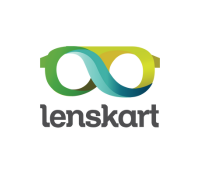Data Science
Online Data Science
In an era where data fuels innovation, Geekonik emerges as a beacon for aspiring data scientists in Delhi NCR, offering a transformative online learning experience. As a leading online institute for data science, Geekonik is dedicated to equipping learners with the skills, tools, and confidence to excel in the rapidly evolving world of data analytics, machine learning, and artificial intelligence. With a focus on accessibility, quality, and industry relevance, Geekonik is redefining how data science education is delivered in one of India’s most vibrant tech hubs.
The Geekonik Difference
Geekonik stands out by blending cutting-edge technology with a learner-centric approach. Headquartered in the bustling Delhi NCR region, the institute leverages the area’s status as a tech and innovation powerhouse to craft programs that resonate with both local and global industry needs. Whether you’re a beginner exploring data science for the first time or a professional aiming to upskill, Geekonik offers a pathway to success through its meticulously designed online courses.
Key Features of Geekonik’s Programs
- Industry-Aligned Curriculum: Geekonik’s courses are crafted in collaboration with industry experts to ensure relevance. From foundational skills like Python programming and statistical analysis to advanced topics like deep learning, computer vision, and big data frameworks, the curriculum prepares students for real-world challenges.
- Expert Instructors: The faculty at Geekonik comprises data science practitioners and educators with extensive experience in fields like finance, healthcare, and e-commerce. Their practical insights and personalized guidance help students bridge the gap between theory and application.
- Flexible Online Learning: Geekonik’s fully online platform offers unmatched flexibility. With a mix of live classes, recorded sessions, and interactive assignments, students can learn at their own pace, making it ideal for working professionals and students in Delhi NCR and beyond.
- Real-World Projects: Hands-on learning is at the heart of Geekonik’s methodology. Students tackle projects like customer segmentation, fraud detection, and predictive analytics using tools such as Python, R, TensorFlow, and Power BI. These projects build a strong portfolio, giving graduates a competitive edge in the job market.
- Career Support: Geekonik goes beyond education by offering career services, including resume-building workshops, mock interviews, and connections to top employers in Delhi NCR’s thriving tech ecosystem. Partnerships with startups and MNCs ensure students have access to internships and job opportunities.
Tailored Data Science Programs
Geekonik offers a diverse range of courses to cater to learners at different stages of their data science journey:
- Data Science Essentials: Perfect for beginners, this course introduces core concepts like data visualization, statistical modeling, and programming fundamentals. It’s designed for those with little to no prior experience.
- Professional Data Science Certification: Aimed at intermediate and advanced learners, this program dives deep into machine learning algorithms, natural language processing, and cloud-based data solutions, preparing students for senior roles.
- Specialized Modules: Geekonik offers niche tracks in areas like AI for retail, data-driven marketing, and predictive maintenance, allowing learners to tailor their education to specific industries.
Each course emphasizes practical skills, ensuring students can apply their knowledge to solve complex business problems.
Why Delhi NCR?
Delhi NCR is a hotbed for technological innovation, hosting a multitude of IT firms, startups, and global corporations. The region’s demand for data scientists is soaring across sectors like fintech, healthcare, and logistics. Geekonik taps into this ecosystem, offering localized expertise while preparing students for global opportunities. By studying with Geekonik, learners position themselves at the forefront of Delhi NCR’s tech revolution.
Unique Benefits of Geekonik
- Mentorship and Community: Every student receives one-on-one mentorship from industry experts. Geekonik also fosters a vibrant community through discussion forums, group projects, and data science hackathons.
- Affordable and Accessible: Geekonik is committed to making education inclusive. With competitive pricing, flexible payment options, and scholarships, the institute ensures financial barriers don’t hinder learning.
- Globally Recognized Certification: Upon completion, students earn certifications that are valued by employers worldwide, enhancing their credibility in the job market.
Transforming Lives Through Data Science
Geekonik’s success is reflected in its alumni, who have landed roles at prestigious companies like Infosys, Wipro, and Flipkart. For instance, Ankit Verma, a former IT support specialist, transitioned into a data scientist role after completing Geekonik’s Professional Certification. “The practical projects and career guidance were game-changers,” he shares. Similarly, Neha Kapoor, a recent graduate, now works as a business analyst at a leading consultancy, crediting Geekonik’s hands-on approach for her success.
Staying Ahead of the Curve
Geekonik’s commitment to innovation ensures its curriculum reflects the latest trends, such as generative AI, data ethics, and real-time analytics. By staying ahead of industry shifts, Geekonik prepares students not just for today’s jobs but for the challenges of tomorrow.
Start Your Data Science Journey with Geekonik
Geekonik’s online institute for data science in Delhi NCR is your launchpad to a rewarding career. Whether you aim to become a data analyst, machine learning engineer, or AI specialist, Geekonik provides the tools, mentorship, and opportunities to succeed. Join a community of passionate learners and take the first step toward mastering data science.
Visit Geekonik’s website today to explore courses, connect with advisors, and enroll in a program that aligns with your goals. With Geekonik, you’re not just learning data science—you’re shaping the future of data-driven innovation in Delhi NCR and beyond.
Any Doubt ?
Get The Best Experience with Us
Our Tech Training Program is designed to bridge the gap between theoretical knowledge and real-world application. Whether you’re a beginner looking to enter the tech industry or a professional aiming to upgrade your skills, our courses are tailored to meet your needs.
What they say!

Our Partners
At Geekonik, we believe in the power of collaboration. Our partners play a vital role in helping us deliver world-class tech education and career opportunities to learners across the globe.We proudly work with leading technology companies, educational institutions, and industry experts to ensure our training programs stay relevant, practical, and aligned with real-world demands.






Our Partners









